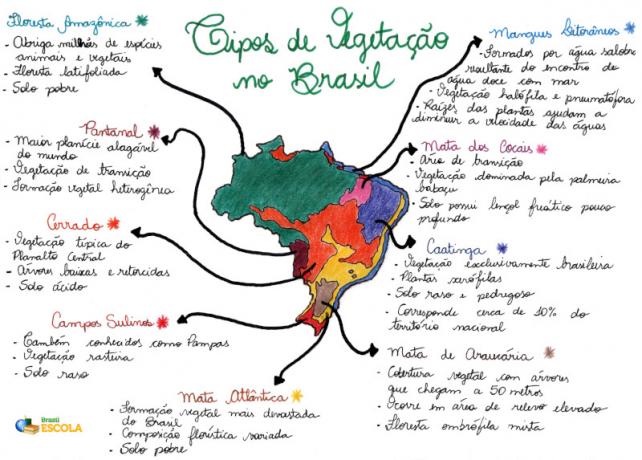Located in the Center-West region, in which the agricultural activity has great prominence, Goiás has extensive areas of pasture and crops. Almost half of the territory of Goiás is formed by rural latifundios, that is, properties with more than a thousand hectares.
In 2008, the contribution of Goiás to the Brazilian Gross Domestic Product (GDP) was 2.5% and, at the regional level, its share was 27.6%.
The composition of the GDP of Goiás is as follows:
Agriculture: 11%
Industry: 27%
Services: 62%
Agriculture in Goiás is of great importance in the national economic scenario, as its production of meat and grains boosts state exports.
Goiás is one of the largest tomato, corn and soy producers in Brazil. Responsible for 33% of the national production of sorghum, Goiás is the main producer of this grain in the country. Other important crops are: cotton, sugar cane, coffee, rice, beans, wheat and garlic.
Livestock, in turn, is constantly expanding. The state currently has the third largest bovine herd in the country. The negative aspect regarding agriculture is that it is the main activity responsible for the destruction of the Cerrado biome, as it triggers constant deforestation and soil degradation.
Goiás also has mineral reserves. Among these, the municipalities of Minaçu (asbestos extraction), Niquelândia and Barro Alto (nickel), and Catalão (phosphate) stand out.
The industry in Goiás is responsible for 27% of the regional GDP, this sector of the economy has been constantly diversifying. The city of Goiânia, capital of the state, houses most of the industrial complexes. Other cities that stand out are: Aparecida de Goiânia, Anápolis, Catalão, Rio Verde and Itumbiara.
Do not stop now... There's more after the advertising ;)
The Agroindustrial District of Anápolis (DAIA) has the largest pharmacochemical complex in Latin America, also housing the food, automobile and textile industries, in addition to having the only dry port Brazilian.
Tourism is another activity of fundamental importance for the economy of Goiás. The cities of Caldas Novas and Rio Quente, the country's main hydrothermal resorts, attract thousands of visitors. Historical tourism is worshiped in the City of Goiás (Goiás Velho), Corumbá and Pirenópolis. In the region of Chapada dos Veadeiros and the Araguaia River, ecological tourism is provided.
Data regarding the export and import of Goiás:
Exports - 4.1 billion dollars:
Soy: 27%
Beef: 16%
Soybean oil extraction residues: 12%
Copper Sulfide: 12%
Poultry meat: 7%
Ferroniobium: 3%
Corn in grain: 3%
Others: 20%.
Imports - 3 billion dollars:
Cars and parts: 37%
Fertilizers and fertilizers: 20%
Pharmaceutical products: 12%
Machines and equipment: 8%
Sulfur: 3%
Others: 20%.
By Wagner de Cerqueira and Francisco
Graduated in Geography
Brazil School Team
Goiás - Midwest region - geography of Brazil - Brazil School
Would you like to reference this text in a school or academic work? Look:
FRANCISCO, Wagner de Cerqueira and. "The Economy of Goiás"; Brazil School. Available in: https://brasilescola.uol.com.br/brasil/a-economia-goias.htm. Accessed on June 28, 2021.


